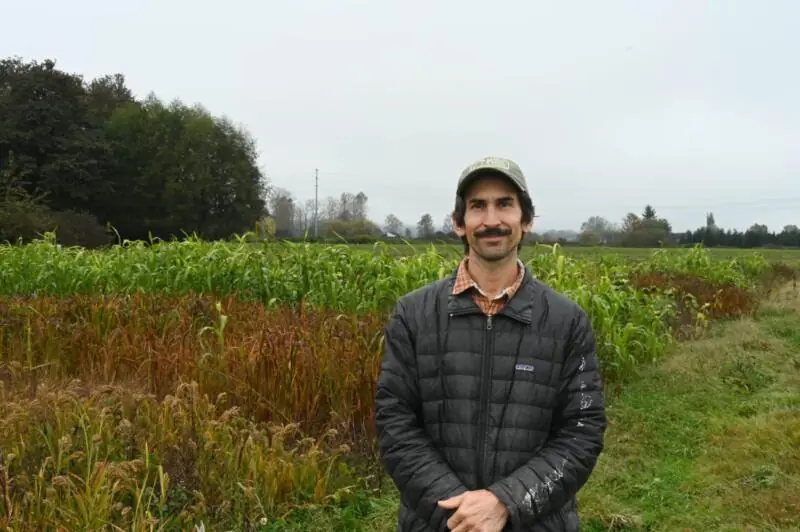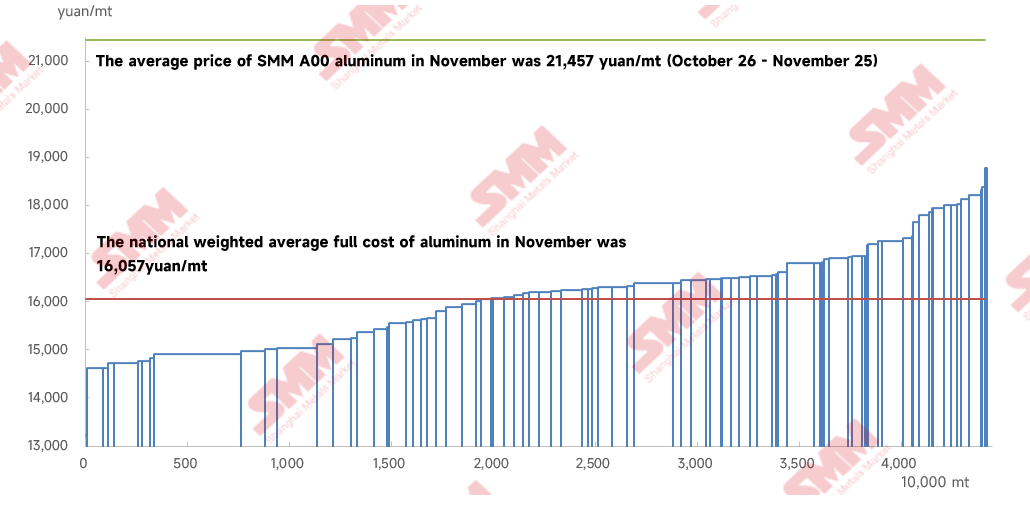A key initiative in Misiones has already planted 100,000 native trees to save the Atlantic Forest – Noticias Ambientales

Report on the Atlantic Forest Restoration Strategy Milestone
Executive Summary
A collaborative initiative in Misiones, Argentina, has achieved a significant milestone with the planting of the 100,000th native tree as part of the Atlantic Forest Restoration Strategy. This project, a partnership between Aves Argentinas, the Misionero Institute of Biodiversity (IMiBio), and the Ministry of Ecology of Misiones, has successfully restored 246 hectares of a critically endangered ecosystem. This achievement represents a substantial contribution to several United Nations Sustainable Development Goals (SDGs), particularly SDG 15 (Life on Land), SDG 13 (Climate Action), and SDG 17 (Partnerships for the Goals).
Project Context: Addressing SDG 15 (Life on Land)
The State of the Atlantic Forest
The Atlantic Forest, which spans Argentina, Brazil, and Paraguay, is one of the world’s most threatened biomes. It is characterized by immense biodiversity, hosting species such as the jaguar and toucan, yet only 7% of its original cover remains. The high degree of fragmentation poses a direct threat to its unique flora and fauna. This restoration project directly addresses the targets of SDG 15 by working to protect, restore, and promote the sustainable use of terrestrial ecosystems, sustainably manage forests, and halt biodiversity loss.
Implementation and Achievements
Operational Details
The planting of 100,000 native tree seedlings was a significant logistical undertaking, requiring a coordinated effort that aligns with the principles of effective environmental management. Key operational metrics include:
- Mobilization of 27 trucks for seedling transport.
- A dedicated team of 30 personnel.
- Over 480 hours invested in planning and planting activities.
Biodiversity Restoration in Focus
The project prioritized the reintroduction of native flora to ensure ecological integrity, a core component of SDG 15.5 (protecting biodiversity and preventing the extinction of threatened species). Key actions included:
- Planting of more than 37 emblematic and native tree species.
- Inclusion of threatened species such as rosewood and palmito, which are vital for the ecosystem’s health.
- Specific species planted include lapacho, petiribí, yvyrá pytá, timbó, and yacaratiá.
As stated by Hernán Casañas, executive director of Aves Argentinas, “The restoration of environments is essential for the future of bird species that depend on the Atlantic Forest to nest, feed, and survive.”
Alignment with Global Sustainable Development Goals
SDG 13: Climate Action
The restoration of 246 hectares of forest contributes directly to SDG 13 by enhancing carbon sinks. Each tree planted helps mitigate the effects of the climate crisis through carbon sequestration, strengthening the ecosystem’s resilience and its capacity for climate change adaptation.
SDG 17: Partnerships for the Goals
This initiative serves as a model for SDG 17, showcasing a successful multi-stakeholder partnership. The collaboration between Aves Argentinas (a non-governmental organization), IMiBio (a scientific institute), and the Ministry of Ecology (a government body) demonstrates that integrated efforts are essential for achieving sustainable development. José Beamonte of Aves Argentinas highlighted this, stating, “This milestone…drives us to continue working…demonstrating that restoration is possible when science, public policies, and citizen commitment come together.”
SDG 4 & SDG 11: Quality Education and Sustainable Communities
The project incorporated strong community engagement, contributing to SDG 4 (Quality Education) and SDG 11 (Sustainable Cities and Communities). A participatory restoration event was held at the Parque del Conocimiento in Posadas, involving institutional representatives, students, volunteers, and local residents. This fosters environmental awareness and promotes the knowledge and skills needed for sustainable development, while also enhancing green public spaces within the community.
Conclusion and Future Outlook
The planting of the 100,000th tree is a symbolic and tangible achievement in the effort to restore the Atlantic Forest. The project not only benefits regional biodiversity and climate resilience but also strengthens local communities and provides a framework for effective partnerships. The ultimate goal is to re-establish the Atlantic Forest as a functional corridor of life, biodiversity, and sustainable opportunities for its inhabitants, fully aligning with the vision of the 2030 Agenda for Sustainable Development.
SDGs Addressed in the Article
SDG 15: Life on Land
- The article directly addresses SDG 15 by focusing on the restoration of the Atlantic Forest, a critically threatened terrestrial ecosystem. The core of the initiative is to “protect, restore and promote sustainable use of terrestrial ecosystems” and “sustainably manage forests.” The planting of 100,000 native trees to recover 246 hectares is a clear action to halt and reverse land degradation and biodiversity loss. The text emphasizes the importance of the forest for unique species like the jaguar and various birds, highlighting the goal of halting biodiversity loss.
SDG 13: Climate Action
- The article connects the forest restoration project to climate change by stating, “The Atlantic Forest is key to conserving biodiversity and addressing the climate crisis through local action.” Reforestation is a well-established strategy for climate change mitigation, as trees absorb carbon dioxide. By restoring the forest, the project contributes to strengthening resilience and adaptive capacity to climate-related challenges.
SDG 17: Partnerships for the Goals
- This goal is demonstrated through the collaborative nature of the project. The article explicitly mentions that the “Atlantic Forest Restoration Strategy is led by Aves Argentinas, the Instituto Misionero de la Biodiversidad (IMiBio), and the Ministry of Ecology of Misiones.” It also highlights the “collective effort of local communities, technicians, volunteers, and organizations,” showcasing a multi-stakeholder partnership between civil society, scientific institutions, and government to achieve a common sustainable development objective.
Specific Targets Identified
SDG 15: Life on Land
- Target 15.1: By 2020, ensure the conservation, restoration and sustainable use of terrestrial and inland freshwater ecosystems and their services, in particular forests, wetlands, mountains and drylands, in line with obligations under international agreements.
- The project’s success in recovering 246 hectares of the Atlantic Forest is a direct contribution to the restoration of a key terrestrial ecosystem.
- Target 15.2: By 2020, promote the implementation of sustainable management of all types of forests, halt deforestation, restore degraded forests and substantially increase afforestation and reforestation globally.
- The milestone of planting 100,000 native trees is a substantial act of reforestation aimed at restoring a degraded and fragmented forest.
- Target 15.5: Take urgent and significant action to reduce the degradation of natural habitats, halt the loss of biodiversity and, by 2020, protect and prevent the extinction of threatened species.
- The initiative specifically included planting threatened species such as rosewood and palmito and aims to restore the habitat for species like the jaguar and various birds, directly addressing the protection of threatened species and their habitats.
SDG 13: Climate Action
- Target 13.3: Improve education, awareness-raising and human and institutional capacity on climate change mitigation, adaptation, impact reduction and early warning.
- The article mentions a “participatory restoration day” that brought together “institutional representatives, students, volunteers, and local residents.” This collective action serves to raise awareness and build local capacity regarding the role of forest restoration in addressing the climate crisis.
SDG 17: Partnerships for the Goals
- Target 17.17: Encourage and promote effective public, public-private and civil society partnerships, building on the experience and resourcing strategies of partnerships.
- The project is a clear example of this target in action, described as an “alliance” between a civil society organization (Aves Argentinas), a public scientific institute (IMiBio), and a government body (Ministry of Ecology of Misiones), further strengthened by the involvement of volunteers and local communities.
Indicators Mentioned or Implied
SDG 15 Indicators
- Area of forest restored: The article explicitly states the recovery of “246 hectares of forest.” This is a direct quantitative indicator of progress in restoring a degraded ecosystem.
- Number of trees planted: The central theme of the article is the “planting of the 100,000th tree,” which serves as a key performance indicator for the reforestation effort.
- Number of native species planted: The text mentions that “more than 37 emblematic species” of the Misiones forest were planted, indicating a focus on restoring the native biodiversity of the ecosystem.
SDG 13 Indicators
- Number of trees planted for climate mitigation: While not explicitly framed as a climate indicator, the 100,000 trees planted are a direct measure of an action that contributes to carbon sequestration and climate change mitigation.
SDG 17 Indicators
- Number and type of partners involved in the initiative: The article implies this indicator by naming the key partners: one NGO (Aves Argentinas), one government ministry (Ministry of Ecology), one scientific institute (IMiBio), and civil society groups (local communities, students, volunteers).
Table of SDGs, Targets, and Indicators
| SDGs | Targets | Indicators |
|---|---|---|
| SDG 15: Life on Land | Target 15.1: Ensure the conservation and restoration of terrestrial ecosystems.
Target 15.2: Promote sustainable forest management, restore degraded forests, and increase reforestation. Target 15.5: Halt biodiversity loss and protect threatened species. |
– 246 hectares of forest recovered. – 100,000 trees planted. – More than 37 native species planted, including threatened ones like rosewood and palmito. |
| SDG 13: Climate Action | Target 13.3: Improve education, awareness-raising, and human capacity on climate change mitigation. | – Participatory restoration day involving students, volunteers, and local residents. – 100,000 trees planted, contributing to carbon sequestration. |
| SDG 17: Partnerships for the Goals | Target 17.17: Encourage and promote effective public, public-private, and civil society partnerships. | – A functioning alliance between an NGO (Aves Argentinas), a government body (Ministry of Ecology), and a scientific institute (IMiBio). – Active involvement of civil society (local communities, volunteers, students). |
Source: noticiasambientales.com
What is Your Reaction?
 Like
0
Like
0
 Dislike
0
Dislike
0
 Love
0
Love
0
 Funny
0
Funny
0
 Angry
0
Angry
0
 Sad
0
Sad
0
 Wow
0
Wow
0














































/environment-climate-change-and-health-(ech)/water-sanitation-hygiene-and-health-(wsh)/landfill-tuvalu-36092.tmb-1200v.jpg?sfvrsn=5c21fe40_1#)



.jpg.webp?itok=0ZsAnae9#)

























